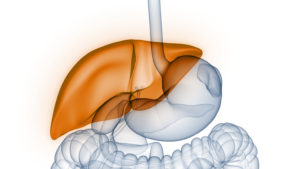The last two weeks, we have been informing readers about gallbladder dysfunction. In the past two blogs, you may have learned more than you ever knew about gallbladders and gallstones. However, this week, we are going to share more signs of gallbladder problems. Then, we will dive deeper and explain what our Orlando gastroenterologists can do to treat gallbladder dysfunction.
Many people confuse their gallbladder issues with regular stomach aches, heartburn, and acid reflux. But when people experience recurring nausea and vomiting episodes after eating, this could definitely indicate there is gallbladder disease. Nausea is not as common as other symptoms like abdominal pain. Doctors always recommend to visit an emergency clinic or physician if patients experience significant nausea or vomiting.
Pancreatitis and gallbladder disease:
 Pancreatitis is another sign of gallbladder disease. When a patient develops pancreatitis, the inflammation of the pancreas, the patient should be checked for gallstones. The pancreas is located next to the liver.
Pancreatitis is another sign of gallbladder disease. When a patient develops pancreatitis, the inflammation of the pancreas, the patient should be checked for gallstones. The pancreas is located next to the liver.
The pancreas discharges digestive enzymes right around the same area of the digestive tract as bile. Because the two ducts meet up close to the intestine, a gallstone in either one duct can affect the function of the other duct.
If the gallstone leaves the gallbladder and gets stuck in the pancreatic duct, it may cause inflammation and abdominal pain. Physicians say that if this happens, it is usually recommended the gallbladder be removed surgically.
Pancreatitis symptoms are as followed:
- nausea
- vomiting
- fever
- rapid pulse
- abdominal pain
Rapid weight gain or weight loss:
There are other issues which occur in the body that are not necessary symptoms of gallstones but are signs of them. Most often, weight gain or weight loss occurs first, then, the gallbladder issues follow. You may wonder why this is.
 People who are obese are more at risk for gallstones. While losing weight is great for your health, it can also help reduce the risk of developing gallstones. However, very rapid weight loss can make people even more prone to developing gallstones than when they were obese.
People who are obese are more at risk for gallstones. While losing weight is great for your health, it can also help reduce the risk of developing gallstones. However, very rapid weight loss can make people even more prone to developing gallstones than when they were obese.
Patients that have gone through with gastric bypass surgery often form gallstones. Of course, it is always healthiest to lose weight naturally. Crash diets and surgeries are shocks to the system.
Diagnosing patients with gallstones and gallbladder issues may begin with an abdominal ultrasound. An abdominal ultrasound involves the use of a transducer. It is not painful as it the ultrasound technician or doctor just moves the transducer on the skin of the patients abdomen, near the gallbladder area.
The gallbladder is a hallow organ, so gallstones can show as solid masses in the gallbladder or bile duct. This test is non-invasive and very quick which is why it is usually the first test used for diagnosing gallstones. Doctors can take note of the size of the gallbladder, swelling of the gallbladder, and thickening of the walls.
Those are three signs of inflammation. To help identify smaller stones, your gastro doctor may use a EUS, or endoscopic ultrasound. Smaller stones may be missed on an abdominal ultrasound.
The doctor will put a small tube down your throat into your digestive tract. A small transducer, a ultrasound device, in the tube produces sound waves that creates a precise image of surrounding tissue. This is how it finds such small stones.
Other imaging tests that may be used include:
- oral cholecystography
- hepatobiliary iminodiacetic acid scan (HIDA)
- computerized tomography (CT)
- magnetic resonance cholangiopancreatography (MRCP)
- endoscopic retrograde cholangiopancreatography (ERCP)
Treatment for gallstones:
Gallstones found during endoscopic retrograde cholangiopancreatography may be removed during the procedure. Blood tests may also reveal pancreatitis, jaundice, or other gallstone related complications.
Actually, many people have gallstones but never have symptoms. They may never need treatment for gallstones. However, those that do experience pain and other complications may need treatment. Gastroenterology Consultants of Central Florida physicians will determine if you need treatment to removed the gallbladder or gallstones alone.
If gallstones frequently occur, your gastro doctors may recommend gallbladder removal, or cholecystectomy. You do not need your gallbladder to live, so the body can do just fine without it. People do experience temporary diarrhea sometimes following the surgery.
If your gastroenterologist, often called stomach doctor, do not feel the need to remove the gallstone, you may be prescribed medicine. These medicines will dissolve the gallstones. This route can take months or years.
Sometimes the medicines do not work at all. For this reason, these medicines may only be reserved for people that cannot undergo surgery. Thank you for stopping by, and we hope you make an appointment with our office immediately if you experience abdominal pain.
Staff Writer
